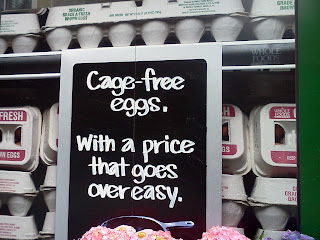| Needle & button in Midtown Manhattan |
Understandably, we use this expression as a metaphor to talk about how difficult it would be to find something. For example, if you're looking for someone in the middle of Time Square on New Year's Eve, when the square is packed with hundreds of thousands of people, you can say, "We probably won't be able to find him; that's like looking for a needle in a haystack." Similarly, if you dropped your ring in the sand at the beach, it would probably be close to impossible to recover the ring, and you can say, "Looking for that ring is like looking for a needle in a haystack, so we might as well forget it."
So, can you think of a situation in the past when you could have used this expression? Perhaps you had to look for an old friend online who has a common name or perhaps you left a book on a shelf in a huge library, but you're not sure where you left it. In these two situations, searching for the book or your friend would be like looking for a needle in a haystack.
Alright, folks. Thanks for checking out this small lesson. If you haven't yet, please join us on Facebook, and follow me, Joe, on Twitter @joeyu2nd for more quick, small English lessons. Catch you later!




